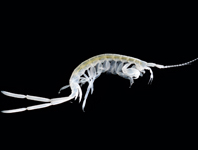Abstract
The poeciliid species, Poecilia kempkesi Poeser, 2013, was the fourth species of the subgenus Acanthophacelus Eigenmann, 1907 to be described, based on individuals from a single urban anthropized locality close to Paramaribo, Suriname (Poeser, 2013). The description itself lacked any section clearly distinguishing the new species from the remaining species of Poecilia Bloch & Schneider 1801, and in particular from the species of the subgenus Acanthophacelus, type species Poecilia reticulata Peters, 1859. According to Article 13 of the International Code of Zoological Nomenclature (ICZN, 1999) the criteria of availability for a species-group name are:
References
Bloch, M.E. & Schneider, J.G. (1801) Systema Ichthyologiae iconibus cx illustratum. Post obitum auctoris opus inchoatum absolvit, correxit, interpolavit Jo. Gottlob Schneider, Saxo. Berolini. Sumtibus Auctoris Impressum et Bibliopolio Sanderiano Commissum, Berlin, 584 pp.
https://doi.org/10.5962/bhl.title.5750
Bragança, P.H.N., Guimarães, E.C., Brito, P.S. & Ottoni, F.P. (2020) On the natural occurrence of Poecilia reticulata Peters, 1859 (Cyprinodontiformes: Poeciliidae). Cybium, 44 (4), 309–316.
https://doi.org/10.26028/cybium/2020-444-002
Deacon, A.E., Ramnarine, I.W. & Magurran, A.E. (2011) How reproductive ecology contributes to the spread of a globally invasive fish. PLoS ONE, 6, e24416.
https://doi.org/10.1371/journal.pone.0024416
Dick, C., Hinh, J., Hayashi, C.Y. & Reznick, D.N. (2018) Convergent evolution of coloration in experimental introductions of the guppy (Poecilia reticulata). Ecology and Evolution, 2018 (8), 8999–9006.
https://doi.org/10.1002/ece3.4418
Eigenmann, C.H. (1907) The Poeciliid fishes from the Rio Grande do Sul and the La Plata basin. Proceedings of the United States National Museum, 32, 425–433.
https://doi.org/10.5479/si.00963801.32-1532.425
Endler, J.A. (1980) Natural selection on color patterns in Poecilia reticulata. Evolution, 34, 76–91.
https://doi.org/10.1111/j.1558-5646.1980.tb04790.x
Endler, J.A. (1983) Natural and sexual selection on color patterns in poeciliid fishes. Environmental Biology of Fishes, 9, 173–190.
https://doi.org/10.1007/BF00690861
Endler, J.A. (1991) Variation in the appearance of guppy color patterns to guppies and their predators under different visual conditions. Vision Research, 31, 587–608.
https://doi.org/10.1016/0042-6989(91)90109-I
Hughes, K.A., Houde, A.E., Price, A.C. & Rodd, F.H. (2013) Mating advantage for rare males in wild guppy populations. Nature, 503, 108–110.
https://doi.org/10.1038/nature12717
ICZN. (1999) International Code of Zoological Nomenclature, 4th Edition. The International Trust for Zoological Nomenclature, London, xxix + 306 pp.
https://doi.org/10.5962/bhl.title.50608
Kemp, D.J, Reznick, D.N. & Grether, G.F. (2008) Ornamental evolution in Trinidadian guppies (Poecilia reticulata): insights from sensory processing-based analyses of entire colour patterns. Biological Journal of the Linnean Society, 95, 734–747.
https://doi.org/10.1111/j.1095-8312.2008.01112.x
Lindholm, A.K., Breden, F., Alexander, H.J., Chan, W.-K., Thakurta, S.G. & Brooks, R. (2005) Invasion success and genetic diversity of guppies, Poecilia reticulata, in Australia. Molecular Ecology, 14, 3671–3682.
https://doi.org/10.1111/j.1365-294X.2005.02697.x
Millar, N.P., Reznick, D.N., Kinnison, M.T, Hendry, A.P. & Persson, L. (2006) Disentangling the Selective Factors That Act on Male Colour in Wild Guppies. Oikos, 113 (1), 1–12.
https://doi.org/10.1111/j.0030-1299.2006.14038.x
Peters, W.C.H. (1859) Eine neue vom Herrn Jagor im atlantischen Meere gefangene Art der Gattung Leptocephalus, und über einige andere neue Fische des Zoologischen Museums. Monatsberichte der Akademie der Wissenschaft zu Berlin, 1859, 411–413.
Poeser, F.N. (2013) Apropos Guppys...Viviparos—Das Lebendgebärenden Magazin, 11 (1), 36–40, 56.
Poeser, F.N., Kempkes, M. & Isbrücker, I.J.H. (2005) Description of Poecilia (Acanthophacelus) wingei n. sp. from the Paría Peninsula, Venezuela, including notes on Acanthophacelus Eigenmann, 1907 and other subgenera of Poecilia Bloch and Schneider, 1801 (Teleostei, Cyprinodontiformes, Poeciliidae). Contributions to Zoology, 74, 97–115.
https://doi.org/10.1163/18759866-0740102007
Schories, S., Meyer, M.K. & Schartl, M. (2009) Description of Poecilia (Acanthophacelus) obscura n. sp., (Teleostei: Poeciliidae), a new guppy species from western Trinidad, with remarks on P. wingei and the status of the “Endler’s guppy”. Zootaxa, 2266 (1), 35–50.
https://doi.org/10.11646/zootaxa.2266.1.2
Valvo, J.J., Rodd, F.H. & Hughes, K.A. (2019) Consistent female preference for rare and unfamiliar male color patterns in wild guppy populations. Behavioral Ecology, 30 (6), 1672–1681.


